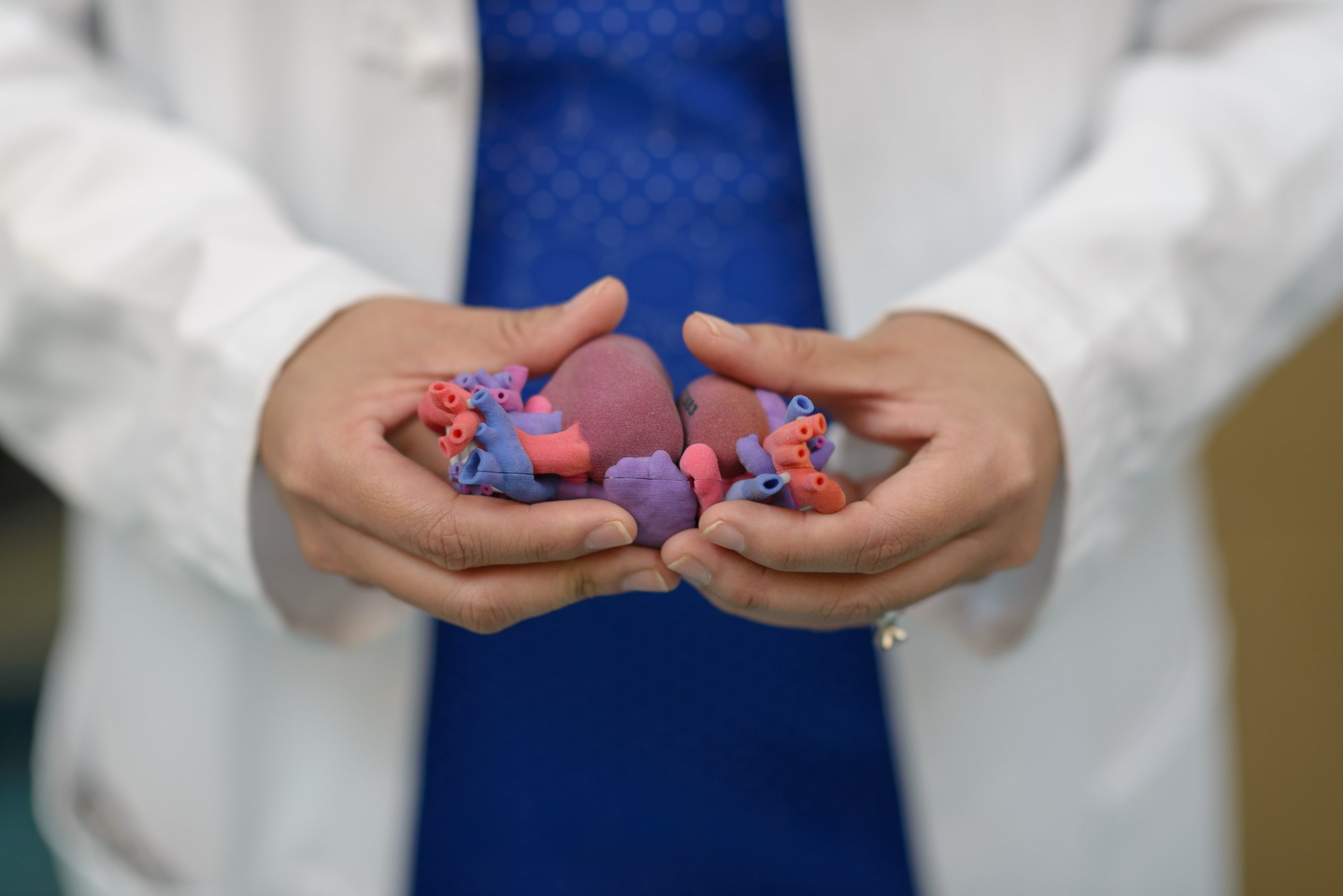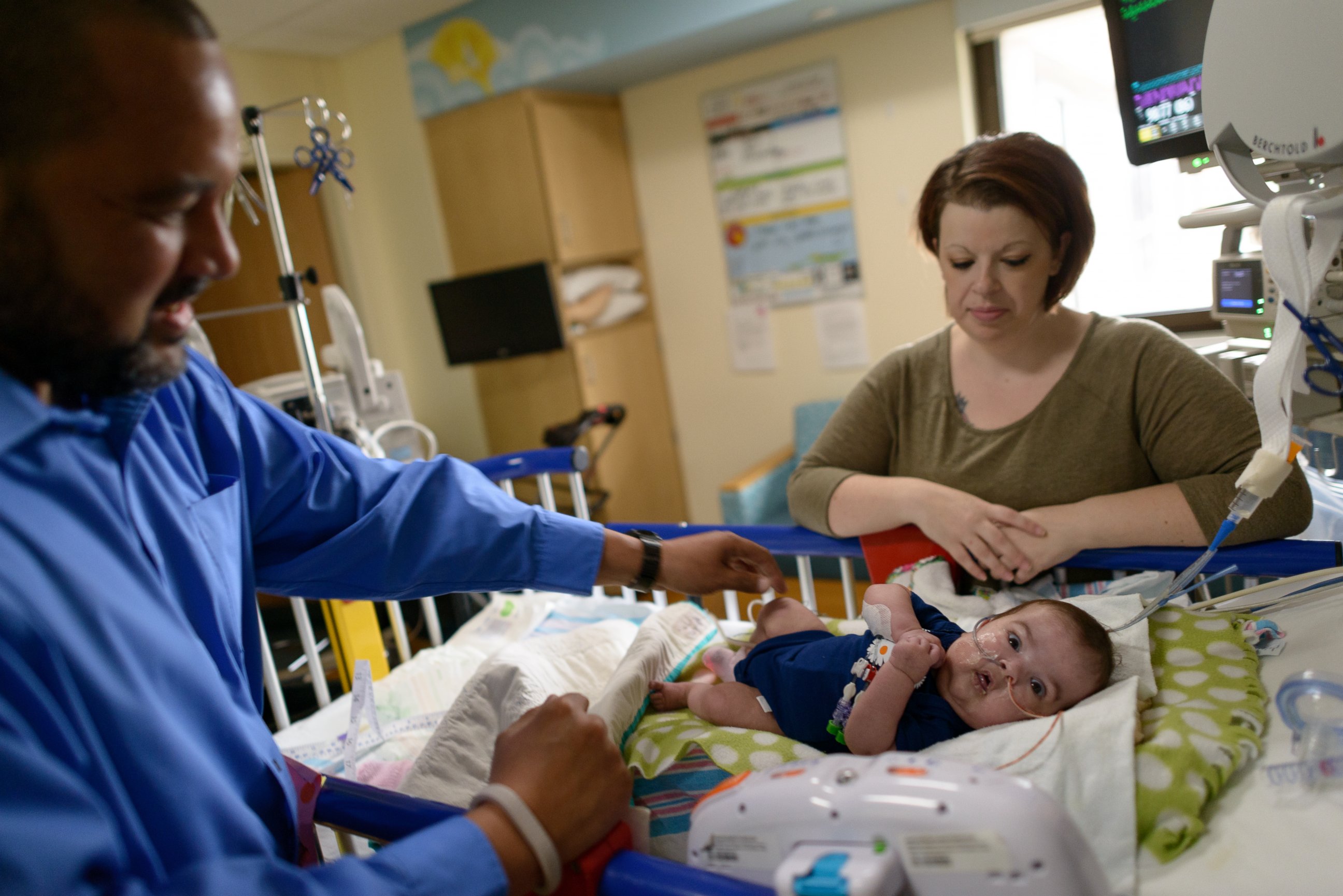Florida Doctors Separate Conjoined Twins Connected at Heart With Help of 3-D Printing
— -- Doctors at a hospital in Gainesville, Florida, recently separated conjoined twin girls with the help of 3-D printing, University of Florida Health (UF Health) announced this week.
Though the procedure happened in June, the twins' physicians and parents only decided to make an announcement this Wednesday, according to UF Health media relations coordinator Rossana Passaniti.
She told ABC News today they wanted to make sure the twins were well into their recovery before sharing news of the successful separation. The parents, Mark and Jacquelyn (who wished not to be identified by their last names), decided "now was a good time" since they were preparing to finally get to take their girls home.
The twins, Scarlett and Savannah, were born at UF Health Shands Children's Hospital in April, according to a news release from UF Health. The babies "each had their own complete set of organs but were attached at the liver, diaphragm, sternum and heart."
"It was a really complex connection because it was close to very important veins in the hearts of both babies," said Dr. Mark Bleiweis in the news release.
Bleiweis is chief of pediatric and congenital cardiovascular surgery at UF Health and the one who performed the heart separation for the twins.

There "have not been many successful separations with a cardiac connection," Bleiweis explained. "It became a very challenging planning process for us."
To help the doctors prepare for the risky procedure, they worked with 3D Systems to print what they believe is the "first-ever 3-D printed conjoined twin heart,", UF Health said.

The life-sized model allowed surgeons to examine the twins' shared structures in the heart and practice the surgical separation itself, the health system explained.
The actual procedure took about six to eight hours, according to UF Health. To differentiate between the various tubes and electrical wires keeping the twins alive, surgeons wrapped them in orange tape for one girl and blue tape for the other.

After the separation, the sisters still had to undergo over a dozen more surgeries each to repair where they had once been connected, UF Health said.
But now, three months after they were first separated, Scarett and Savannah getting ready to go home.

"I know that Mark and Jackie were told by many not to pursue this because it was daunting, and it could not and would not be successful," Bleiweis said. "Nothing gives us greater satisfaction than seeing the two twins separated, and to see both parents holding their twins."





